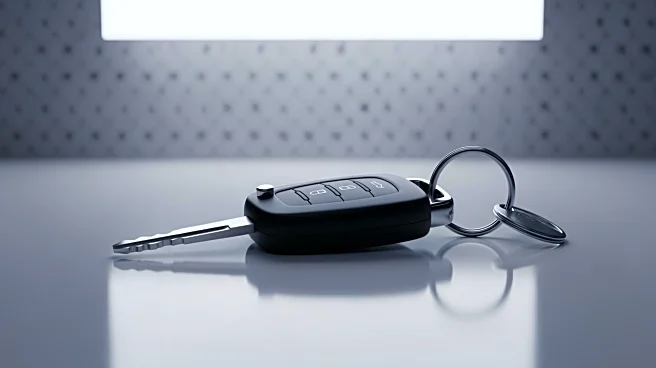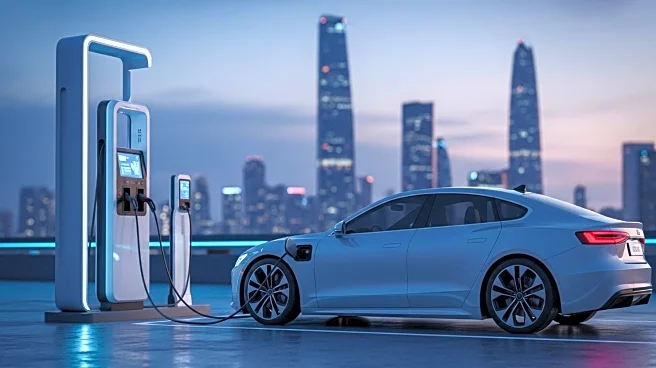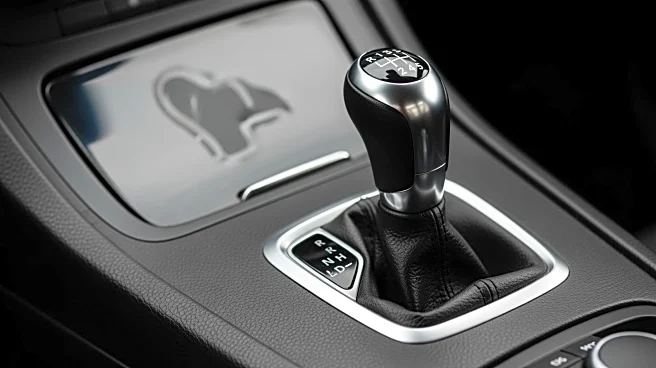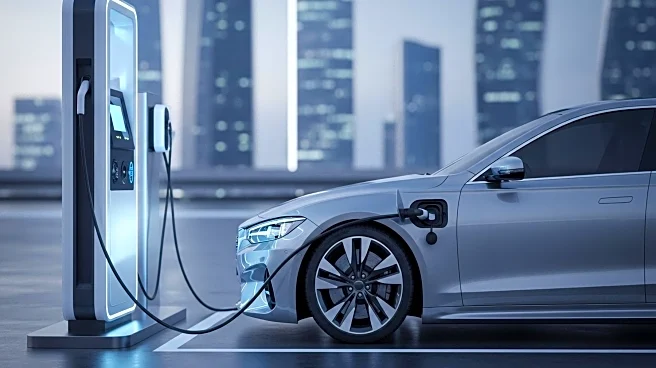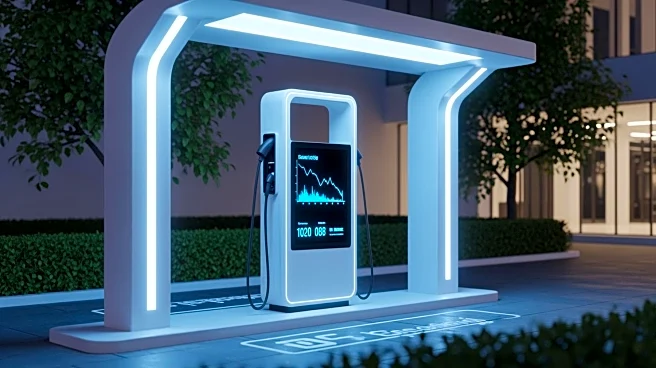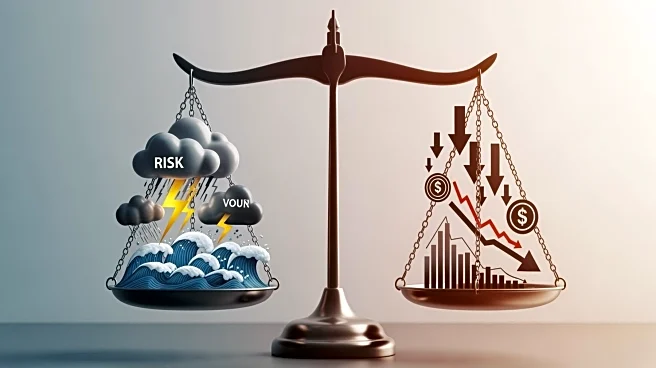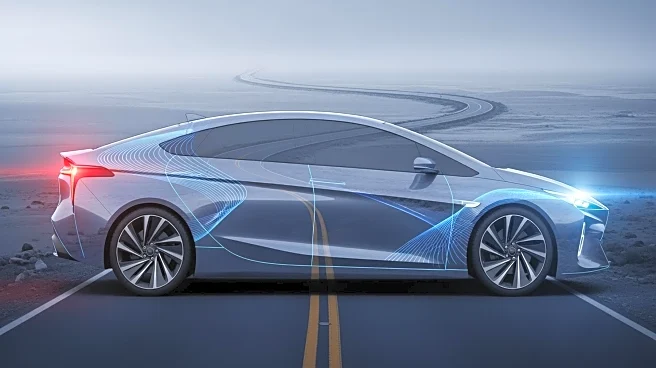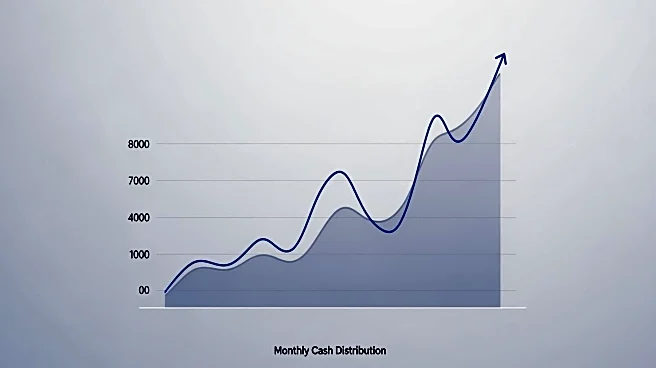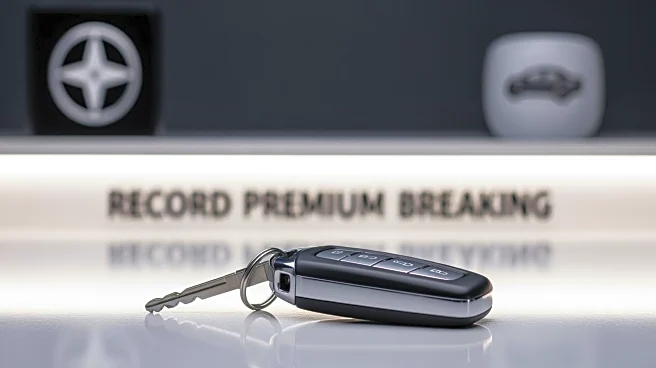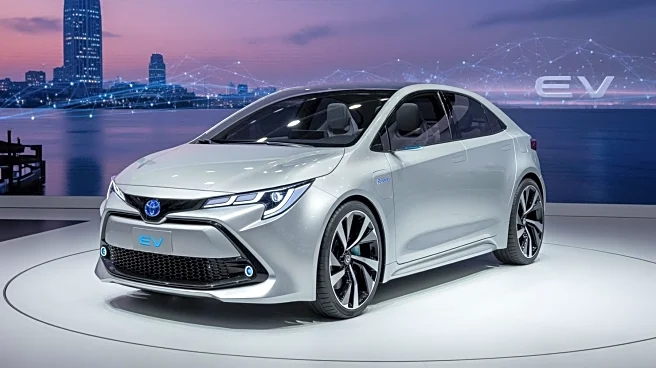What's Happening?
The average price of a new car in the U.S. reached a record $50,080 in September, according to Kelley Blue Book. This milestone reflects a significant increase in vehicle prices post-COVID recovery, with luxury and electric vehicles contributing to the rise.
Many consumers are rolling old auto debt into new financing, resulting in negative equity. In the third quarter, 28.1% of trade-ins had negative equity, with an average debt of $6,905. The trend indicates that new-vehicle ownership is becoming a luxury, with monthly payments exceeding $1,000 for 19.1% of borrowers.
Why It's Important?
The rising cost of new cars is reshaping the automotive market, making it increasingly inaccessible to average consumers. This shift could lead to a greater reliance on used vehicles, impacting car manufacturers and dealerships. The financial strain of high car payments and negative equity may affect consumer spending and economic stability. As new-car ownership becomes a luxury, the disparity between affluent and average consumers may widen, influencing market dynamics and consumer behavior.
What's Next?
As prices continue to rise, consumers may opt for used cars or hold onto their current vehicles longer, affecting new-car sales. Dealerships may need to adjust their strategies to cater to changing consumer preferences. Financial institutions might face increased risk from auto loans with negative equity. The automotive industry may experience shifts in production and marketing strategies to address affordability concerns.
Beyond the Headlines
The trend of rising car prices raises ethical questions about consumer debt and financial literacy. It highlights the need for better financial education and responsible lending practices. The long-term impact on consumer behavior and economic inequality could influence public policy and industry regulations.
